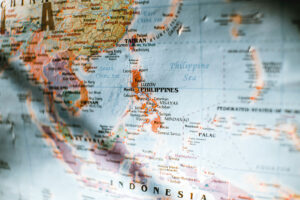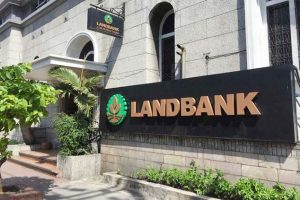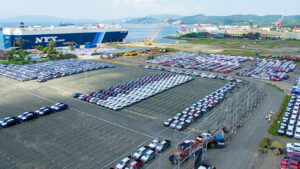Spaces for cooperation

Space technology has more practical uses than many would imagine.
It’s easy to see space technology as something quite literally out of this world when there are plenty of urgent concerns and issues we must attend to here on the Earth’s surface.
But while it is true that there are numerous problems that demand our urgent attention, the Philippines must safeguard its sovereignty, monitor environmental changes, ensure economic security, and respond effectively to natural disasters and other threats. The solution to some of these problems could lie in advancements in space technology.
For a country like the Philippines, a rising middle power, it should not be far-fetched to imagine that we can leverage on space technology as a real and powerful tool to help address the myriad of issues that we face.
Space Science, Technology and Applications (SSTA) provide for evidence-based decision-making, something that is always desirable as we navigate the complex world and the traditional and nontraditional threats with which we now live. With the increasing involvement of various actors in space activities, indeed there is a multi-polar aspect to space exploration.
We are not alone, and we need not be as there is an increasing involvement of various actors in space activities.
The protection of our maritime domain is the first thing that comes to mind. The Indo-Pacific region, for instance, emerges as a dynamic and fiercely competitive geopolitical arena, characterized not only by its vast maritime expanses but also by the intricate realm of outer space politics. Maritime domain awareness, facilitated by space-based assets, is a cornerstone of the Philippine security strategy, enabling the monitoring of territorial waters and combating aggression to ensure maritime security.
Satellite technology in this instance is a critical tool in monitoring the movements of other forces and other countries in our maritime space, far from where anybody could visually keep track of those movements. Through this, we are made aware of any threats and encroachments perpetuated by other nations with vested interests in what has been established as ours. This will, in turn, allow us to plan our moves and strategize on how best we can ward off such infringements.
The Philippines recognizes the immense potential of space-based Earth observation systems in enhancing maritime awareness. These space systems provide insights into the dynamics of the maritime domain and resource protection for a wide range of stakeholders, including the military, environmental groups, and government ministries responsible for transportation, commerce, maritime affairs, environmental protection, and disaster preparedness.
Collaborative efforts among various agencies focus on studying the marine environment and impact of human activity in the West Philippine Sea using satellite imagery. Techniques developed by the Philippine Space Agency, for instance, enable us to analyze images to detect ship presence around Pag-asa island and surrounding cays, while mapping monthly chlorophyll levels and ship presence near Hughes Reef reveals fluctuating patterns.
The time to harness these advancements is now, as they offer unprecedented potential to address maritime challenges and safeguard marine resources for future generations.
OTHER APPLICATIONSOutside of marine security, there are other applications of space technology of which people may not immediately be aware. Food security and sustainable resource management, for instance, could make a big difference in our nation’s economic and political life. Satellite imagery and precision agriculture could be tapped to enhance agricultural productivity and ensure long-term sustainability.
For example, the Philippine Space Agency (PhilSA) and the Department of Environment and Natural Resources signed a MoA to create a geospatial database of the country’s natural resources and monitor the National Greening Program (NGP) using spaceborne data. This joint initiative, funded by the Department of Environment and Natural Resources, aims to strengthen science-based policymaking. PhilSA employs satellite technology, including remote sensing and artificial intelligence, to support NGP Progress Monitoring and the National Resource Accounting Program (NRAP). This collaboration showcases how advanced space technologies enhance environmental conservation efforts.
PhilSA employs satellite remote sensing, machine learning, artificial intelligence, and geographic information systems. This supports the NGP Progress Monitoring by generating vegetation trend maps and detecting forest disturbance. Additionally, PhilSA develops methodologies for mangrove mapping and air quality mapping under NRAP. This collaboration highlights the role of advanced space technologies in enhancing environmental conservation efforts.
The PhilSA also utilizes satellite imagery to produce fishing ground maps nationwide, collaborating with the Department of Agriculture, Bureau of Fisheries and Aquatic Resources, and National Fisheries Research and Development Institute. These maps aid in identifying current and potential fishing zones, providing valuable data for fisheries management.
Stakeholders receive guidance on optimal fishing locations, timing, and regulations. These insights are shared with the Task Force on Zero Hunger, led by the Cabinet Secretary, to support livelihood and food security initiatives, according to PhilSA.
Space-based communication technologies play a crucial role in bridging digital divides and fostering connectivity across the Philippine archipelago, facilitating access to education, healthcare, and economic opportunities for all Filipinos.
Such commitment to capacity-building and workforce development cultivates a skilled and resilient workforce equipped with the expertise to leverage space technologies for economic growth and societal benefit.
We at Stratbase are happy to provide a platform for discussions on space technology in the Philippines through a forum held yesterday. In partnership with the Embassy of Canada in the Philippines and in collaboration with the Philippine Space Agency, we hosted a day-long hybrid event on “Navigating the Frontiers of Global Space Collaboration and Promoting Space Science and Technology Applications Across Industries.”
The prospects are promising. This is just the start of the conversation, and we look forward to actualizing these plans and initiatives, maximizing the benefits of space technology, with the help of our friends from other countries and different sectors, for the common good.
Victor Andres “Dindo” C. Manhit is the president of the Stratbase ADR Institute.




